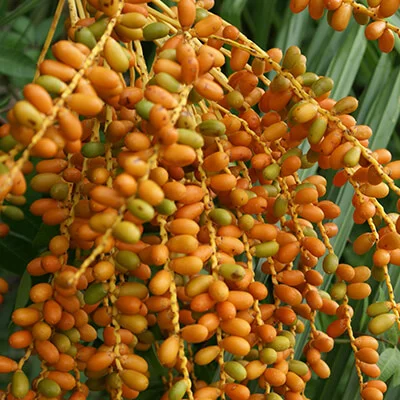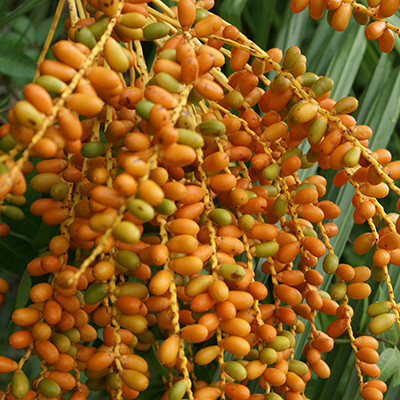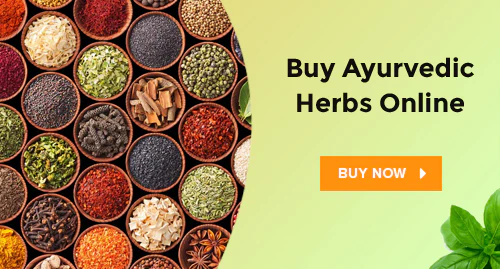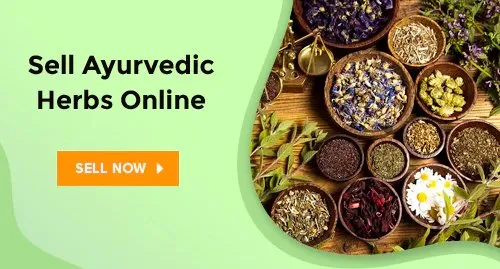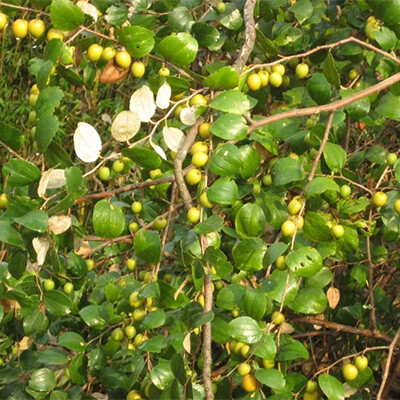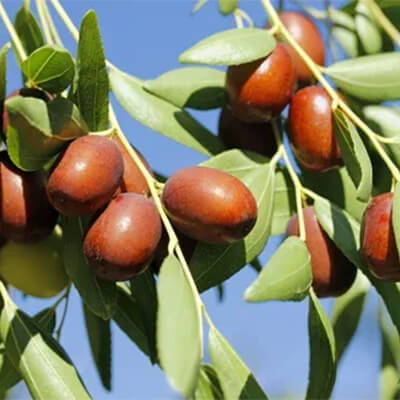On This Page
Date Palm, Khajoor (Phoenix Dactylifera) – Uses and Benefits
Introduction
Khajoor is botanically known as the Phoenix dactylifera Linn. and it is an edible low-cost food that is the oldest known fruit crop that has been cultivated in the middle east and North Africa for at least 5000 years. Its common name is Date Palm, Kharjura, etc. It has many therapeutic uses and health benefits. The exact origin of the date is unknown because of its long history, and wide distribution but it is predicted that most likely it originated from western India or the ancient Mesopotamia area. Kharjura is widely used by traditional medical practitioners and as staple food due to which it is the main income source for the local population in many countries. Phoenix dactylifera Linn. Contributes various pharmacological effects like anti-asthmatic, anti-inflammatory, anti-diabetic, hepatoprotective, nephroprotective, aphrodisiac, etc. In Ayurvedic classical texts, Kharjura is sweet with cold potency and gives excellent eye nourishment effect, cardiotonic, cures emaciation, etc.
Basonym of Herb Kharjura
खर्जू: व्यथा कंडुर्वा, खर्जू राति ददातीति, स्कंधस्य परुषत्वात।
Kharjura (Phoenix dactylifera) induces itching when climbing because of its rugged stem.
Synonyms of Kharjura
According to Morphology
दुरारोहा-स्कन्धस्य खरत्वात् कृच्छेणारुह्यते।
The tree of Kharjura is having a rugged stem, so it is difficult to climb.
सकन्धफला- सकंधे फलतीति |
Fruits of Kharjura are seen on the trunk.
According to Properties and Action
स्वादु फला – स्वादूनि फलान्यस्या: |
Kharjura fruits are having a sweet taste.
Some other important synonyms of Khrjura are as follows:
Nishreni: Kharjura is a tall tree.
Khar Skandha: It has a rugged stem.
Svadu Mastaka: The top portion is sweet.
Drida Kantaka: Its leaves are spiny.
Pindi: Its sweet fruits are solid.
Regional Name of Khajoor
- Khajura (Hindi)
- Khejura (Beng.)
- Itta (Malalayam)
- Khajura (Marathi, Gujarati)
- Rutab (Arab)
- Khurma (Pers.)
- Date (English)
Botanical Name
Phoenix dactylifera Linn.
Phoenix is the Greek name for Kharjura tree, dactylifera means long date.
Family
Arecaceae (Palmae nom. alt.)
Ayurveda Reference for Kharjura (Phoenix dactylifera)
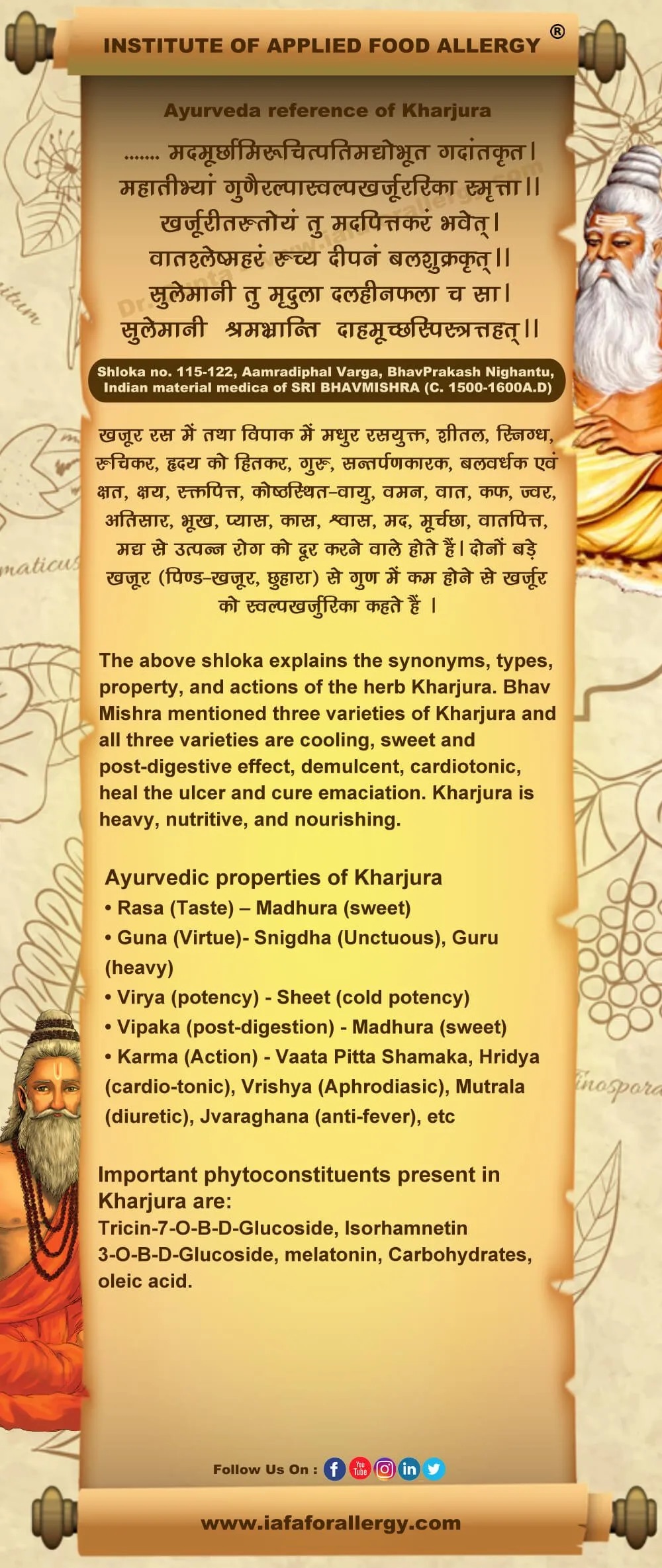
Scientific Classification of Khajoor
| Kingdom | Plantae |
| Class | Monocotyledons |
| Series | Calycinaceae |
| Family | Palmae |
| Genus | Phoenix |
| species | dactylifera |
Classification of Kharjura as per Charaka and Sushruta
- Charka: Virechnopaga, Shramahara Mahakshaya, Kashaya Sakandha, Madhura sakandha
- Sushruta: Madhura Varga
Kharjura Description in Brihtrayi
| Charaka | Shusruta | Vagbhata (Ashtang Hridya) |
| C. S. Su. 4/ 40 | S. S. Su. 42/ 18 | A. H. Su. 5/ 72 |
| C. S. Su. 23/ 37 | S. S. Su. 45/ 174 | A. H. Su. 6/ 119 |
| C. S. Su. 25/ 49 | S. S. Su. 46/ 182, 186, 310, 334, 432 | A. H. Su. 10/ 32 |
| C. S. Su. 27/ 113, 124, 274 | S. S. Ni. 16/ 9 | A. H. Ci. 1/ 109 |
| C. S. Vi. 8/ 144, 146, 151 | S. S. Chi. 8/ 26 | A. H. Ci. 2/ 14 |
| C. S. Chi. 1.2/ 12 | S. S. Chi. 11/ 8 | A. H. Ci. 3/ 81, 123 |
| C. S. Chi. 1.3/ 2 | S. S. Chi. 17/ 27 | A. H. Ci. 5/ 18 |
| C. S. Chi. 1.4/ 13 | S. S. U. 36/ 5 | A. H. Ci. 6/ 46 |
| C. S. Chi. 2.1/ 28 | S. S. U. 39/ 183 | A. H. Ci. 7/ 20, 101 |
| C. S. Chi. 2.2/ 6, 14, 18, 21 | S. S. U. 42/ 108 | A. H. Ci. 8/ 149 |
| C. S. Chi. 3/ 156, 238, 258 | S. S. U. 45/ 20 | A. H. Ci. 10/ 52 |
| C. S. Chi. 4/ 33, 71 | S. S. U. 46/ 15 | A. H. Ci. 13/ 16 |
| C. S. Chi. 5/ 123, 134 | S. S. U. 47/ 40 | A. H. Ci. 14/ 75 |
| C. S. Chi. 8/ 96, 100, 115 | S. S. U. 50/ 28 | A. H. U. 24/ 51, 52 |
| C. S. Chi. 11/ 21, 37, 63, 72 | S. S. U. 52/ 33 | A. H. U. 40/ 18 |
| C. S. Chi. 14/ 10 | ||
| C. S. Chi. 15/ 152 | ||
| C. S. Chi. 18/ 189 | ||
| C. S. Chi. 20/ 28 | ||
| C. S. Chi. 21/ 109 | ||
| C. S. Chi. 22/ 41, 42 | ||
| C. S. Chi. 24/ 136, 140 | ||
| C. S. Chi. 26/ 76, 93, 168, 171 | ||
| C. S. Chi. 28/ 120 | ||
| C. S. Chi. 29/ 66, 96 | ||
| C. S. K. 11/ 6 | ||
| C. S. Si. 12/ 36, 54, 55 |
External Morphology of Phoenix Dactylifera (Kharjura)
Kharjura botanically known as Phoenix dactylifera is a robust tree up to 16 meters high (when not cut for tapping).
Trunk: Trunk rough owing to persistent leaf bases of fallen leaves
Leaves: Leaves 3-5 meters long; leaflets up to 45.0 x2.5 cm., spine-tipped, 7.5 cm. apart.
Flower: Male flowers white, in a compact spadix, peduncle short and flattened.
Female Flowers in spikes fascicled on the peduncle, 60 cm. or more long.
Sepals united.
Petals are twice as long as calyx.
Fruit: Oblong, 25-75 com long, reddish-brown or yellowish-brown when ripe, the pulp is fleshy and sweet. Seeds are cylindrical with a longitudinal furrow in front.
Flowering and fruiting time
The flowering of Kharjura occurs from January to April or the winter to the summer season.
Distribution of Kharjura
Globally: A native of Asia minor, it is now grown commercially in California and North Africa. It was introduced to Spain and from there to Mexico by Spanish missionaries.
Pind Kharjura is native to Egypt, Syria, and Arab.
Kharjura was introduced into India including Gujrat and Hyderabad (Andhra Pradesh), the headquarters of the erstwhile Nizam state.
Useful Part of Kharjura
Fruit, juice, leaves, Nira (Fresh fermented sap), Guda (Palm jaggery) or Gur, Vinegar (Fermented sap), Toddy.
Nutritional Value of Kharjura
| Nutrients | Value/ 100g |
| Protein (g) | 2 g |
| Fat | 0.2 g |
| Fiber | 7 g |
| Sugar | 66 g |
| Iron | 0.9 mg |
| Vitamin D | 0.1 mg |
| Calcium | 64 mg |
| Magnesium | 54 mg |
| Phosphorus | 62 mg |
| Potassium | 696 mg |
| Sodium | 1 g |
| Zinc | 0.44 mg |
Important Phytoconstituent of Kharjura
Fruit contains protein 1.2%, carbohydrate 33.8%, fibers 3.7%. minerals 1.7%, calcium 0.22% and phosphorus 0.38%. It contains vitamin B and C. Pinda Kharjura contains a higher nutritive value. Ripe fruits of Pinda Kharjura contain a sugar percentage of up to 87 percent.
Main fatty acid: Oleic acid. Along with this it also consists of other fatty acids such as stearic acid, linolenic acid, lauric acid, and palmitic acid.
Its fruit consists of Tricin-7-O-B-D-Glucoside, Isorhamnetin 3-O-B-D-Glucoside, melatonin, carbohydrates.
Recent Research on Kharjura
- Antioxidant
- Anti- atherogenic
- Cardioprotective
- Anti- Viral
- Gastroprotective
- Hepatoprotective
- Anti- mutagenic
- Antimicrobial
- Antidiabetic
- Immunostimulant
- Antifungal
- Anti-bacterial
- Anticancer
- Anti-ulcer
- Anti-aging
Rasa-Panchaka (Properties) of Kharjura
| Rasa (Taste) | Madhura (sweet) |
| Guna (Virtue) | Snigdha (Unctuous), Guru (heavy) |
| Virya (Potency) | Sheet (cold potency) |
| Vipaka (Post-Digestion) | Madhura (sweet) |
| Karma (Action) | Vaata Pitta Shamaka, Hridya (cardio-tonic), Vrishya (Aphrodisiac), Mutrala (diuretic), Jvaraghana (anti-fever), etc. |
Prayogarha Vyadhi (Therapeutic Indication) of Kharjura
Kasa, Hikka, Swasha, Rakta- Pitta, Granthi, Balya, Jvara- Attisara, Kosthgata Vata, Chardi, Shukra Kshaya, Danta Shool, Kati Shool, Gridhasi, Ura Kshata, Mada, Murcha, etc.
Aamyik Prayog (Therapeutic Uses) of Kharjura
- Raktaja Parmeha (Haematuria) – Decoction of Kharjura, Kashmarya, Sinduvara seed, and Guduchi mixed with honey checks haematuria. (Vrindamadhava)
- Chardi (Vomiting) – Kharjura, coconut, Draksha, or Badara should be taken as linctus. (Charaka)
- Grahaniroga (Sprue) – Fermented juice of Draksha, sugarcane, and Kharjura should be used. (Charaka)
- Aruchi (Abnormal taste) – Paste of Kharjura and Draksha should be gargled. (Sushruta)
- Raktapitta (Intrinsic hemorrhage) – Kharjura fruit mixed with honey is useful in intrinsic hemorrhage. (Sushruta)
- Hiccough (Hikka) – A pulp of Kharjura and Pippali mixed with honey should be used in hiccough. (Sushruta)
- Cough (Kasa) – Linctus made of Kharjura, Pippali, Daraksha, and parched paddy each in equal quantity added with honey and ghee is an excellent remedy for cough caused by Pitta. (Vrinda Madhav)
- Swar Bhed (Hoarseness of voice) – Ghee mixed with Kharjura, Draksha, and Pippali, alleviates Swar Bheda. (Charaka)
Important Benefits of Kharjura
- Constipation (Vivandha): Constipation occurs in the body due to dehydration, lack of fibers in the food, or can be indicative of some underlying disease. Dates are loaded with a huge number of dietary fibers which regulate bowel movements and act as a mild laxative. Therefore, dates help in curing constipation.
- Acidity (Amlapitta): Due to Sheet Virya (cold potency) of Kharjura it helps in relieving acidity and soothes the tummy.
- Hypertension (Uccha Rakt Chapa): Kharjura is high in potassium and low in sodium. Thus, it is the ideal diet for regulating blood pressure.
- Cardiotonic (Hridya): Kharjura contains negligible cholesterol amount and also helps to regulate LDL in the bloodstream. Therefore, Kharjura acts as an excellent cardio tonic.
- Instant energy (Balya): Kharjur is the natural source of sucrose and fructose sugar as a result of which aids in fighting sudden fatigue and tiredness.
- Healthy bones and joints (Asthi Sandhi Balkarak): As Kharjura is a rich source of iron, Vitamin B-6, and Vitamin C, therefore, helps to maintain healthy bones and also helps in beating osteoporosis condition.
- Skin problems (Tvak Vikara): Kharjura helps to reduce wrinkles and fine lines due to its anti-aging and antioxidant properties.
- Diabetes (Prameha): Due to its low glycemic index and active compounds that make it anti-diabetic, it is beneficial in the case of diabetes and does not cause major fluctuation in blood glucose levels.
Matra (Therapeutic Administration and Dosage) of Kharjura
- Decoction (Kwath) – 50-100 ml
- Kalka (Paste) – 10-20 gram

Have A Health Issue?
Consult Online
- Dr. Sahil Gupta (B.A.M.S., M.H.A.)
Ayurvedic Allergy Specialist
CEO & Founder of IAFA®
Classical Reference of Babbula
Classical Reference of Kharjura
BhavaPrakash Nighantu, Amradiphaladi varga, 115-119
भूमिखर्जूरीका स्याद्वी दुरारोह: मृदुच्छदा।
तथा स्कन्धफला काककर्कटी स्वादुमस्तक: ॥
पिण्डखर्जूरिका त्वन्या सा देहे पश्चिमे भवेत् ।
खर्जूरी गोस्तनाकारा परद्वीपादिहागता ॥
जायते पश्चिमें देशे सा छोहारीति कीर्त्यते।
Types of Kharjura
खर्जूरी त्रितयं शीतं मधुरं रसपाकयो:।।
स्निगधम रुचिकरं हृद्यम क्षतक्षयहरं गुरु।
तर्पणं रक्तपित्तहरं पुष्टि विष्टम्भ शुक्रदम्।।
कोष्ठमारुतहद बल्य वान्ति वातकफापहम् ।
ज्वरातिसार क्षुतृष्णाकासश्वासनिवारकम्।।
Kaiyadeva Nighantu, Aushadhi Varga 294- 298
सिंही श्रेमी खरस्कंधा नि: श्रेणी दृढ़कण्टका ।
कषाया मधुरा स्वाद्वी दुरारोहा ग्रहापरा।।
भूमिखर्जुरिका काककर्कटी काकपर्कटी।
खर्जुरिका स्वादुफला सुफला स्वादुमस्तका।।
पिण्डखर्जूरिका
पिण्डखर्जूरिका खर्जु:दु:प्रवर्षा सुकण्टका ।
खर्जुर गुणा:
खर्जुरम तुवरं शीतं मधुर रसपाकयो:।।
स्निग्धं रुचिकरं हृद्यं क्षतक्षयहरं गुरु।
तर्पणं रक्तपित्तघ्न तुष्टिपुष्टिद शुक्रलम्।।
कोष्टठमारुतकृत् वनयं दाहवातकफापहम् ।
ज्वराभिघातक्षुतृष्णा कासश्वासस्त्रीयच्छति।।
खर्जुर मस्तकमज्जा
मज्जा तु मूर्धज: स्वादुर्वृष्यो रक्तकफापह: |
खर्जुर वृक्ष तोयं
खर्जूरिकातोयं मदपित्तकरं परं।।
वातश्लेष्महरं रूच्यं दीपनं बलशुक्रकृत।
Varieties of Kharjura
There are two varieties of Kharjura Drug i.e. Kharjura and Pindah Kharjura. The fruit of Pinda Kharjura is big, fleshy and its leaves are sharply pointed. The source plant is botanically named Phoenix dactylifera Linn. The dried fruit of this plant is known as Gostana Kharjura (Chhuhara).
Three kinds of kharjura are collectively put in a group and named ‘Kharjura trikaya’. Bhavaprakasa Nighantu also mentions Sulemani Kharjura which is a variety of Pinda Kharjura.
In Raja Nighantu, the kinds of kharjura are mentioned as follow:
- Kharjuri
- Pindakharjuri
- Raja Kharjuri
- Madhu Kharjuri
- Bhu kharjuri
Bhukharpuri is botanically identified as Phoenix acaulis Roxb or Phoenix humilis Royle. Hintala is botanically known as Phoenix paludosa Roxb.
Classical reference of types of Kharjura in Raja Nighantu:
खर्जूरी (Raja Nighantu, Aamradi Varga, 55- 56)
खर्जूरी तु खरस्कन्धा दुष्प्रवर्षा दुरारुहा।
नि: श्रेणी च कषाया च यवनेष्टा हरिप्रिया।।
खर्जूरी तु कषाया च पक्वा गौल्यकबायका।
पित्तघ्नी कफदा चैव क्रिमिकृद्धष्यवृंहणी।।
मधु खर्जूरी (Raja Nighantu, Aamradi Varga, 57- 58)
मधुखर्जूरी त्वन्या मधुकर्कटिका च कोलकर्कटिका।
कण्टकिनी मधुफलिका माध्वी मधुरा च मधूर खर्जूरी।।
मधुखर्जूरी मधुरा वृष्या सन्तापपित्तशान्तिकरी।
शिशिरा च जन्तुकरी बहुवीर्य विवर्धनं तनुते।।
भू खर्जूरी (Raja Nighantu, Aamradi Varga, 59)
भूखर्जूरी भुक्ता वसुधाखर्जूरिका च भूमिखर्जूरी ।
भूखर्जूरी मधुरा शिशिरा च विदाह पित्तहरा॥
पिण्डखर्जूरी (Raja Nighantu, Aamradi Varga, 60)
दीप्या च पिण्डखर्जूरी स्थलपिण्डा मधुस्रवा।
फलपुष्पा स्वादुपिण्डा हयभक्ष्या स्वराभिधा।।
राजखर्जूरी (Raja Nighantu, Aamradi Varga, 61- 62)
तथा अन्या राजखर्जूरी राजपिण्डा नृपप्रिया।
सुनिखर्जूरिका वन्या राजेष्टा रिपुसन्मिता ॥
पिण्डखर्जूरिका युग्मं गौलयम स्वादे हिमं गुरु।
पित्तदाहार्त्ति श्वासघ्नं श्रम हृद्य वीर्यं वृद्धिदम।।
Specific Formulation of Kharjura
- Ahiphen Vataka
- Jatiphaladi Vati
- Amritaprasha Ghrita
- Eladya Modak
- Eladi Gutika
Yogratnakara
- Eladi Churna
Contraindication and Side Effects of Kharjura
- It is advised to take dates under medical supervision in case of pregnancy and during breastfeeding.
- Moderation is the key to any kind of thing. So it is good if you take Dates in moderation as excessive intake may cause the digestive issues that can cause diarrhea.
- In a few people, it may cause skin rashes.
- A fully ripe date contains approximately 80% of sugar (fructose and sucrose). In a few cases, it may result in fructose intolerance. It may cause unhealthy weight gain in people who have a sedentary lifestyle if taken in excessive amounts.
Suggestive Readings Regarding Kharjura
- Ahmad, Ateeq & Dutta, Soni & Singh, & Maurya, Santosh. (2013). Phoenix dactylifera Linn. (PIND KHARJURA): A review. International Journal of Research in Ayurveda & Pharmacy. 4. 447-451. 10.7897/2277-4343.04328.
- Gohil, Kunal & Prajapati, Pradeep & Harisha, Channappa & Lecturer, Kunal. (2015). Detailed Pharmcognostical Evaluation of Fresh and Processed Fruits Of Kharjura (Phoenix Dactyliferous). 5. 3-2015.
- Dhoke, S. P., R, H. C., Shinde, P., C, M. K., & G, B. (2018). Comparative Pharmacognostical Evaluation of Three Market Samples of Kharjura (Phoenix Dactylifera Linn.). InternationalJournal of Ayurvedic Medicine, 9(1). https://doi.org/10.47552/ijam.v9i1.1067
- Dhoke, Sujata P et al. “A placebo-controlled clinical evaluation of Kharjurapaka in Mamsakshaya.” Ayu vol. 36,4 (2015): 404-409. doi:10.4103/0974-8520.190696
References
- Agnivesha, Charaka, Dridhabala . In: Charaka Samhita, ed. Vaidya Jadavaji Trikamji Aacharya., editor. Varanasi: Chaukhamba Sanskrit Sansthan; 2009.
- Sushruta. In: Sushruta Samhita, Sutra Sthana, ed. Vaidya Jadavji Trikamji Acharya., editor. Varanasi: Choukhambha Orientalia; 2005.
- Vagbhata. In: Ashtanga Hrudaya, 9th ed. Anna Moreshwar Kunte, Krishnashastri Navarre, Harishastri, editors. Varanasi: Choukhambha Orientalia; 2005.
- Bhavamishra. In: BhavaPrakasha Nighantu, 11th ed. part 2. Brahma Shankara Mishra., editor. Varanasi: Choukhambha Bharati Academy; 2009.
- Bhavprakasha, commentary by Bulusu Sitaram, forwarded by K.C.Chunekar
- Dhanvantari Nighantu, Diwedi BK. Editor. Guduchyadi varga, Chaukhamba Krishnadas Academy, Varanasi; 2008.
- Sharma PV, Kaideva Nighantu. Aushadhi Varga. Chaukhamba Orientalia, Varanasi; 2006:
- Tripathi I., Raja Nighantu, Guduchyadi varga, Chaukhamba Krishnadas Academy; Varanasi; 2010
- Dr. Gyanendra Pandey, Dravyaguna Vigyana, reprint 2012, Chwkhamba Krishnadas Academy
- K.niteshwar Dravyagunavigyana, reprint 2017.
- Dr. J.L.N. Sastry and Dr. B.S. Sastry, Dravyaguna Vigyana, Chaukhambha Orientalia, Varanasi.
- Chakrapanidatta, chakradatta with the vaidayaprabhahindi commentary by indradevatripathi, chaukambha sankritasansthan, varanai 2nd Edition, 1994.
- Nutritional and medicinal potential of Grewia subinaequalis DC. (syn. G. asiatica.) (Phalsa), DOI: 10.5897/JMPR2015.5724
- https://indiabiodiversity.org/species/show/264319
- https://doi.org/10.47552/ijam.v9i1.1067
Ayurveda is an Indian system of medicine that is popular since ancient times. Dr. Gupta’s IAFA® has been conducting research studies to find out different phytoconstituents of herbs and their action in the body. Such knowledge acquired by our experts is used in the preparation of medicines and providing the treatment facilities safely and effectively. IAFA® is the provider of safe and effective treatment for a wide range of diseases, mainly allergic diseases all based on Ayurveda.
Was this Page Helpful?
Read More Articles

Souvira / Raja Badara (Zizyphus Sativa, Ziziphus Xylopyrus, Zizyphus Vulgaris) – Part – 2
Souvira or Raja Badara botanically known as Zizyphus vulgaris or Zizyphus xylopyra is a deciduous tree…

Karkandhu / Kshudra Badara (Zizyphus Nummularia) – Part – 3
Karkandhu or Z. nummularia is a type of Badara that is commonly…

Badara / Kola (Ziziphus Jujuba, Ziziphus Mauritiana) – Part – 1
Badara is wildly and cultivated found in India and it is a…

